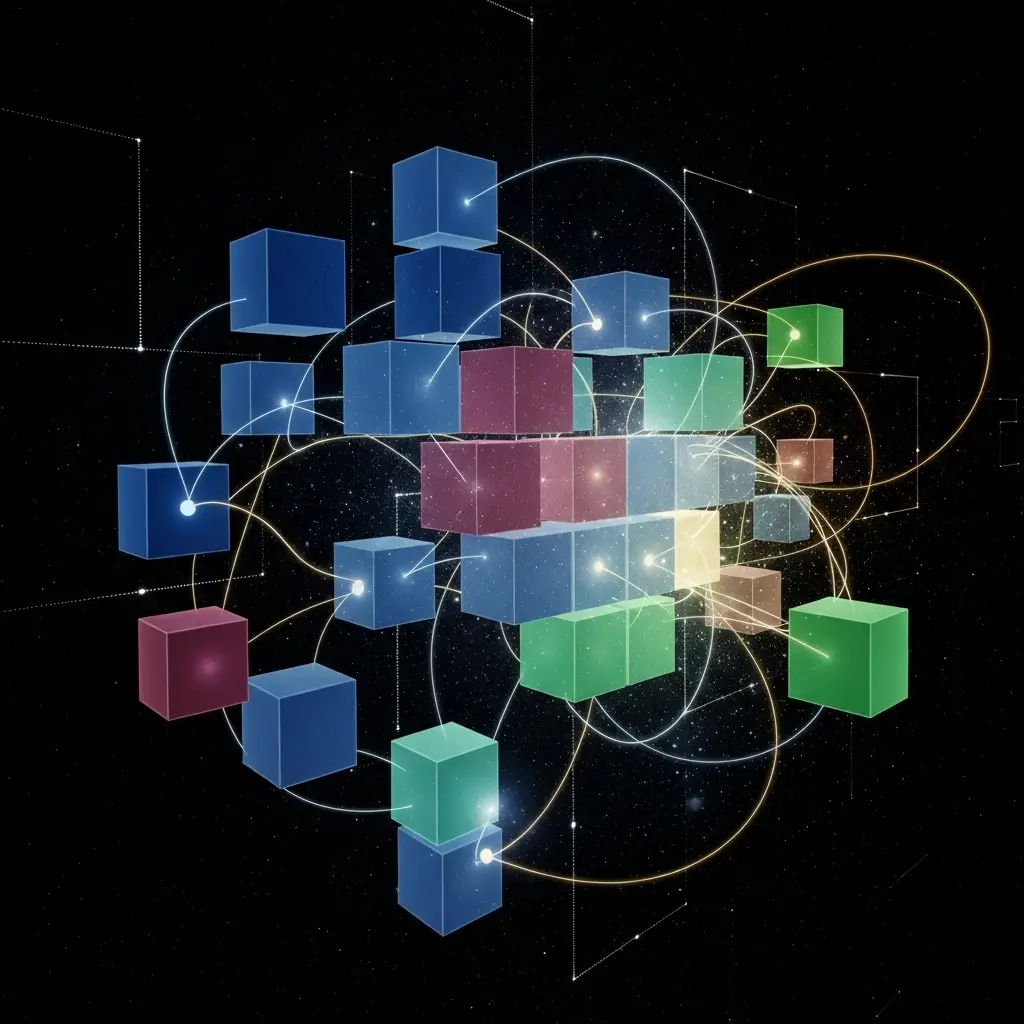Key Takeaways
- Mastering your emotions is essential for regaining control and understanding their energy flow within you.
- You can utilize various techniques, such as mindfulness, deep breathing, and journaling, to cultivate emotional mastery.
- Identifying triggers transforms them into teachers, guiding you toward healing and self-discovery.
- Mindful acceptance and cognitive reappraisal help in responding thoughtfully rather than reacting impulsively.
- Commit to daily practices for a week to build momentum and create lasting habits of emotional awareness.
Estimated reading time:15 minutes
Table of contents
- 🐎7 Powerful Techniques for Mastering Your Emotions Today
- 🐴The Wild Horse Analogy
- 💡The Importance of Emotional Awareness
- 🎯Identifying Your Triggers and Patterns
- 🧰Developing Healthy Coping Mechanisms
- 🧘Mindful Emotion Regulation
- 🔄Cognitive Reappraisal
- 🤲Acceptance and Commitment
- 🤝Seeking Professional and Energetic Support
- 🏇Conclusion: Taking the Reins of Your Inner World
- 📅Your 7-Day Action Plan: From Theory to Practice
- 📚Recommended Reads & Resources
🐎7 Powerful Techniques for Mastering Your Emotions Today

Ever felt like your emotions were a runaway train, leaving you feeling overwhelmed and out of control? You’re not alone. Mastering your emotions can be a crucial step toward regaining control. We often forget that emotions are more than just chemical reactions; they are quite literally energy in motion (e-motion), flowing through the vessel of our body. Each feeling has its own frequency, its own texture. Joy can feel light and expansive, like sunshine filling your chest, while grief can feel dense and heavy, a river carving new pathways within you.
This energy flows through what many wisdom traditions call the “emotional body”—an energetic layer of our being that holds the resonance of our experiences. Emotions are a powerful force, but they don’t have to dictate your life. In this comprehensive guide, we’ll explore the art of emotional mastery, providing you with practical techniques to understand, regulate, and harness the power of your feelings. By the end of this post, you’ll have the tools to transform emotional turmoil into a source of profound self-knowledge, intuitive guidance, and personal power.
🐴The Wild Horse Analogy

Imagine your emotions as a herd of wild horses, magnificent and powerful. Untamed, they can wreak havoc, leading to impulsive decisions and strained relationships. But these horses aren’t separate from you; they are the voice of your soul, your intuition, your untamed inner wisdom.
As the rider, you represent the conscious, discerning mind. Your job isn’t to break the horse’s spirit with force or suppression—that only leads to a disconnected and resentful steed. Your role is to build trust, to listen with your whole being, and to learn its language. This mastery isn’t about breaking the horse’s spirit; it’s about forming a sacred partnership where your conscious intention (the rider) and your soul’s wisdom (the horse) move as one. It’s not about suppressing your feelings but rather understanding and guiding them with a gentle, intuitive hand.
💡The Importance of Emotional Awareness

The first step to emotional mastery is cultivating awareness. This means paying attention to your emotions without judgment, recognizing them as messengers from your deeper self. Acknowledging and labeling them as they arise is key. Instead of saying, “I feel bad,” try to pinpoint the specific emotion. Anger, for instance, often carries a hot, sharp, outward-moving vibration, signaling that a boundary has been crossed. Sadness might have a cool, heavy, flowing vibration, inviting you to release something you’ve been holding onto.
By expanding your emotional vocabulary, you honor the complexity of your inner world. As you label an emotion, ask yourself: “Where do I feel this in my body?” Is the anxiety a tightness in your chest? Is the excitement a fluttering in your stomach? Emotions are not abstract thoughts; they are physical experiences. Grounding them in your body is the first step to moving their energy.
🎯Identifying Your Triggers and Patterns

Once you’re aware of your emotions, start identifying your triggers—the situations, people, or events that evoke strong reactions. Instead of seeing triggers as something to be avoided, what if you saw them as sacred teachers? They are spotlights illuminating the exact places within you that are ready for healing.
Consider that these triggers are not random. They are often tied to energetic patterns or even “soul contracts”—lessons our soul chose to learn in this lifetime for our ultimate growth. A person who triggers your fear of abandonment, for example, may be a soul partner who agreed to help you find your own unshakable inner security. When you get triggered, you can pause and ask with curiosity, “What is this situation here to show me about myself?”
🧰Developing Healthy Coping Mechanisms

Building a toolbox of holistic coping mechanisms is crucial. Here are a few powerful techniques:
- Mindfulness and Meditation: These practices help you dis-identify from the emotion and connect with the part of you that is pure, unchanging awareness—the silent observer. You are not the anger; you are the vast, loving space in which the anger is allowed to arise and pass.
- Deep Breathing Exercises: This is a form of conscious alchemy. With every inhale, you draw in prana, or universal life force energy, to cleanse and vitalize your system. With every exhale, you consciously release the dense, stagnant energy of the emotion, returning it to the universe to be transformed.
- Physical Activity: Think of it as an energetic cleanse. As you run, dance, or stretch, you are physically shaking loose stuck emotional energy from your cells and your energy field. Feel your feet on the ground and imagine you are drawing up stabilizing energy from the Earth while releasing what no longer serves you back into it.
- Journaling: Think of your journal as a sacred mirror, a space where your soul can speak to you without the filter of your conscious mind. Try asking questions directly to your emotions: “Dear Anxiety, what are you trying to protect me from?” You might be surprised by the wisdom that flows onto the page.
- Creative Expression: This is the art of transmutation. You take the raw, chaotic energy of an emotion and channel it into a new form—a painting, a poem, a melody. In doing so, you are not destroying the energy but honoring it by turning it into something of beauty and meaning.
🧘Mindful Emotion Regulation

Mindfulness isn’t just for stress reduction. It’s a powerful tool for emotional regulation that allows you to see your feelings as passing clouds in the infinite sky of your consciousness. By observing your emotions without judgment, you create space to respond thoughtfully rather than react impulsively.
🔄Cognitive Reappraisal

This technique involves changing how you think about a situation to alter its emotional impact. This is about consciously choosing the energetic reality you wish to inhabit. Your thoughts create your emotional vibration, and that vibration is what attracts your life experiences. By reframing a situation, you are actively tuning your personal frequency to a more empowered and desirable outcome. For example, instead of seeing a job interview as a terrifying ordeal, reframe it as an opportunity to share your unique gifts and connect with others.
🤲Acceptance and Commitment

This approach reflects the spiritual law of non-resistance. What you fight, you feed with your own life force. When you accept an emotion—even a painful one—you allow its energy to move through you instead of getting stuck in you. It’s about acknowledging your feelings, thanking them for their message, and moving forward with purpose despite them. You can say, “I feel deep sadness right now, and I am still committed to making myself a nourishing meal because my well-being is my value.”
🤝Seeking Professional and Energetic Support

If you’re struggling, don’t hesitate to seek support. A therapist, especially one who embraces a holistic mind-body-spirit perspective, can provide invaluable guidance. You might also explore support from energy healers (like Reiki or craniosacral therapists) who work directly with the body’s energy field, or somatic practitioners who help you release trauma stored in the body’s tissues. The proper support is the one that resonates with your whole being.
🏇Conclusion: Taking the Reins of Your Inner World

You’ve now explored the landscape of your emotional self, and the wild horses of your feelings no longer need to run unchecked. Emotional mastery isn’t about eliminating emotions; it’s about becoming a skilled rider. It’s the practice of understanding, guiding, and harnessing their immense power.
Remember, this is a practice, not a destination. Be gentle with yourself. You are learning the language of your soul. Each time you pause, breathe, and listen to the wisdom of your inner horses, you are not just managing your day—you are reclaiming the reins of your own magnificent life. The path forward begins with a single, intentional step.
📅Your 7-Day Action Plan: From Theory to Practice

Actual change comes from action. Don’t let this be just another article you read; let it be the start of a transformation. Commit to the following tasks for the next week to build momentum and create lasting habits.
1. Choose Your Keystone Habit (Commit to One): Select one of the following techniques to practice daily for the next seven days. Mark a calendar each day you complete it to hold yourself accountable.
- The 5-Minute Anchor: Dedicate 5 minutes each morning to a deep breathing exercise. Let this be the anchor that sets a calm, intentional tone for your day.
- The Emotion Log: Before bed, spend 10 minutes journaling. Identify one or two key emotions you felt, what triggered them, and how you responded. Then, ask it: “What message do you have for me?” Write down the first thing that comes to mind.
- The Alchemical Reframe: When you face a stressful situation, consciously pause. Write down your initial “lead” thought, and then consciously transmute it into a “golden” thought that feels more empowering.
2. Become a Trigger Detective: Your mission this week is to meet one of your sacred teachers (a recurring trigger). Notice what situation, person, or thought consistently sparks a strong emotional reaction. Write it down. The goal isn’t to fix it yet—it’s simply to build awareness.
3. Expand Your Emotional Vocabulary: Move beyond “good” or “bad.” This week, whenever you experience a strong emotion, pause and label it with a more specific word (e.g., “frustrated,” “anxious,” “disappointed,” “joyful,” “content”). Acknowledging the precise emotion diminishes its power to control you.
4. Practice Mindful Acceptance (Once a Day): When a complex emotion arises, instead of pushing it away, place a hand on the part of your body where you feel it most strongly. Breathe into that space and say to yourself, “I am feeling [emotion], and I am sending it compassion. It is okay.” Acknowledge its presence without judgment, and then consciously re-focus on a task that aligns with your values. You are practicing feeling an emotion without letting it dictate your actions.
“Our actions and decisions today will shape how we will live. And so it is.”
If my words made you pause, smile, or think, Buy Me a Coffee. It helps fuel my thinking and keeps my dream alive, one word at a time. 🍵
📚Recommended Reads & Resources

Suggested Books
The recommendations are grouped by their primary focus to help you explore the areas that resonate most with you.
For Understanding the Science and Language of Emotions (Emotional Intelligence)
- Atlas of the Heart by Brené Brown: This book is a perfect follow-up to the article’s point on “expanding your emotional vocabulary.” Brown maps out over 87 emotions and experiences, giving you the precise language to understand what you are feeling, which is the first step to mastery.
- Permission to Feel by Marc Brackett, Ph.D.: From the director of the Yale Center for Emotional Intelligence, this book offers a practical and evidence-based system (RULER) for recognizing, understanding, labeling, expressing, and regulating emotions.
- Emotional Intelligence 2.0 by Travis Bradberry & Jean Greaves: A convenient guide that not only explains emotional intelligence but also provides a step-by-step program to increase it, with specific strategies for self-awareness, self-management, social awareness, and relationship management.
For Mindfulness, Acceptance, and Working with Thoughts (The Rider)
- The Untethered Soul: The Journey Beyond Yourself by Michael A. Singer: This book powerfully explores the concept of the “silent observer” mentioned in the article. It teaches you how to detach from your thoughts and emotions and connect with your deeper, unchanging consciousness.
- Radical Acceptance by Tara Brach, Ph.D.: Brach is a leading voice in blending Buddhist wisdom with Western psychology. This book is a masterclass in the “Acceptance and Commitment” principle, teaching you how to stop fighting your feelings and embrace your life with compassion.
- The Happiness Trap: How to Stop Struggling and Start Living by Russ Harris: Based on Acceptance and Commitment Therapy (ACT), this book directly addresses how to handle painful emotions. It’s an excellent practical guide for understanding that you can move toward your values even while feeling difficult emotions—just as the article suggests.
For the Body-Based & Energetic Approach (The Horse)
- The Body Keeps the Score: Brain, Mind, and Body in the Healing of Trauma by Bessel van der Kolk, M.D.: A landmark book that scientifically explains how emotions and trauma are stored in the body. It validates the article’s assertion that emotions are “physical experiences” and explores somatic therapies for release.
- The Language of Emotions: What Your Feelings Are Trying to Tell You by Karla McLaren: This book is the ultimate guide to the author’s concept of emotions as “messengers.” McLaren reframes every emotion, even the most difficult ones, as a source of wisdom and guidance, offering specific practices for working with each.
- Waking the Tiger: Healing Trauma by Peter A. Levine, Ph.D.: For those who feel their emotional triggers are deeply rooted, this book introduces Somatic Experiencing®. It explains how to gently release trapped energy and trauma from the nervous system, aligning perfectly with the idea of “moving the energy” of an emotion.
Online Resources & Tools
Apps for Daily Practice
- InsightTimer: A massive free library of guided meditations, breathing exercises, and talks from thousands of teachers. You can find practices on everything from mindfulness and anxiety to energy healing and somatic tracking.
- Calm /Headspace: Excellent, well-structured apps for beginners looking to build a consistent meditation and mindfulness habit. They offer guided courses on managing anxiety, stress, and improving focus.
- Waking Up with Sam Harris: For those who appreciate a more philosophical and logical approach to mindfulness, this app delves into the theory of the mind and the nature of consciousness, helping you understand the “silent observer” on a deeper level.
Websites & Blogs
- Tara Brach’s Website (tarabrach.com): Offers hundreds of free guided meditations and talks that directly support the practice of radical acceptance and mindful self-compassion.
- The Greater Good Science Center (greatergood.berkeley.edu): An online magazine that shares “science for a meaningful life.” It provides research-backed articles and practices for mindfulness, emotional intelligence, and compassion.
- Tiny Buddha (tinybuddha.com): A community-driven blog featuring posts and stories about happiness, love, relationships, and mindfulness. It’s a great source of relatable wisdom and simple, actionable tips.
Podcasts for Deeper Learning
- On Being with Krista Tippett: In-depth, soulful conversations with scientists, theologians, artists, and poets about the spiritual and human dimensions of life. It aligns with the article’s deeper, more philosophical undertones.
- Ten Percent Happier with Dan Harris: Features practical, no-nonsense conversations with meditation experts and scientists. It’s excellent for anyone skeptical but curious about the benefits of mindfulness for emotional regulation.
- Huberman Lab Podcast: Neuroscientist Andrew Huberman provides science-based tools for everyday life. Search for his episodes on stress, dopamine, breathing (pranayama), and focus to understand the biological mechanisms behind the techniques mentioned in the article.
Directories for Professional Support
- Psychology Today Therapist Finder: A comprehensive directory to find licensed therapists. You can filter by specialty, including “Somatic,” “Mindfulness-Based (MBCT),” and “Acceptance & Commitment (ACT).”
- Somatic Experiencing International Directory: For those interested in working directly with a practitioner to release trauma and stuck energy from the body.
- The Center for Mindful Self-Compassion: Offers workshops, courses, and a directory of trained teachers who can guide you in developing a more compassionate relationship with yourself and your emotions.
SoBrief.com provides users with book summaries and related content.
Remember to explore these resources with an open mind and trust your intuition to find what resonates most deeply with your journey of rediscovery.

🔗 Affiliate Note: Some links on this page may be affiliate-based, allowing us to earn a small commission at no additional cost to you. Your support helps fuel this creative and healing mission—thank you!

Copyright ©️IZALGO, LLC All Rights Reserved
